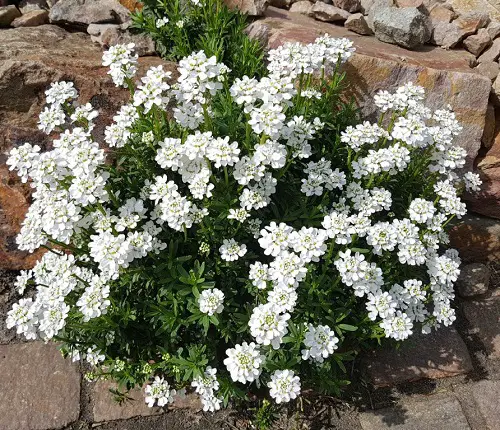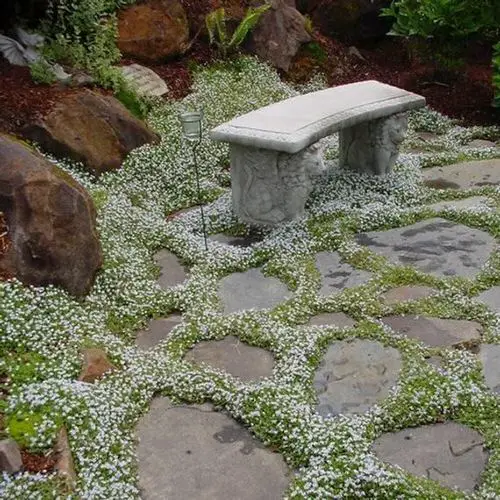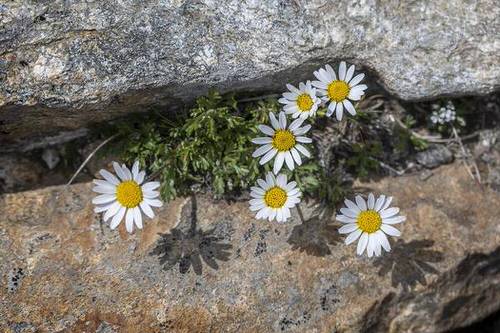Here are the most beautiful Plants for Cracks and Crevices in Garden to fill the ugly gaps and make them stand out!
Those stubborn cracks and gaps in your garden pathway, walls or rocky outcrops look really bad, with dirt and muck accumulating in them. What if you can grow plants in them to transform these eyesores into beautiful features?
Best Plants for Cracks and Crevices in Garden
1. Dianthus

Botanical Name: Dianthus spp.
Dianthus flowers emit a spicy scent with cinnamon or clove notes. The leaves of these plants for cracks and crevices are slender and scarcely spread on thick stems.
2. Creeping Thyme

Botanical Name: Thymus serpyllum
This versatile fragrant herb is an excellent choice for cracks and it can tolerate walking on. Make sure before planting that the area is weed free.
3. Rockroses

Botanical Name: Cistus
These plants for cracks and crevices display soft green leaves in diverse shapes and fragrant blooms in late spring and early summer.
4. Saxifraga

Botanical Name: Saxifraga ‘Southside Seedling’
The sprays of white blooms with petals marked in a dark red hue. This mounding plant showcases silver-green foliage on branched stems.
5. Rockcress

Botanical Name: Aubrieta deltoidea
Both purple rock cress and rock wall cress are excellent for cracks. They prefer full sun but can also withstand some shade.
6. Artemisia
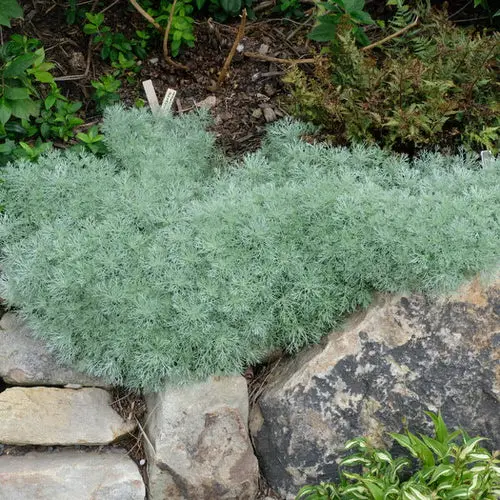
Botanical Name: Artemisia schmidtiana
Also known as silver mound wormwood, the delicate leaves keep their shape and color in the hottest months of summer.
7. Candytuft
Botanical Name: Iberis sempervirens
This European native mostly displays white blooms, while some cultivars offer lilac or pink blossoms. Plant it in well-draining alkaline soil.
8. Snow in Summer
Botanical Name: Cerastium tomentosum
It blooms profusely with flowers in a star-shaped silver hue, resembling a pile of snow. It likes full sun but can be grown in partial sunlight.
Best Flowering Ground Cover Plants
9. Creeping Jenny
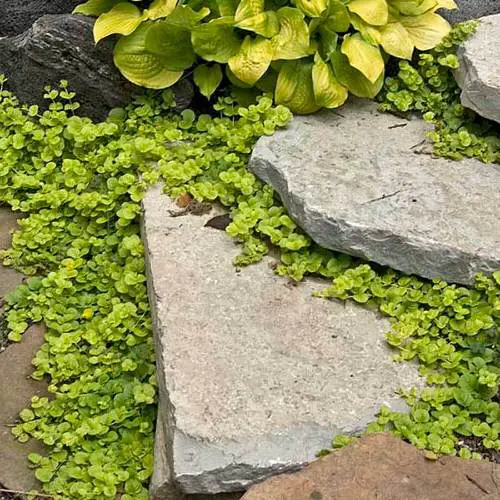
Botanical Name: Lysimachia
Also known as moneywort, this evergreen perennial is a hardy plant that grows well in full sun or shade. It needs frequent watering and little organic fertilizer when first planted.
10. Wooly Yarrow

Botanical Name: Achillea tomentosa
This flowering perennial displays clouds of white blooms; choose a sunny and warm location. It does not need fertilizer and only wants water in severe drought.
11. Creeping Phlox
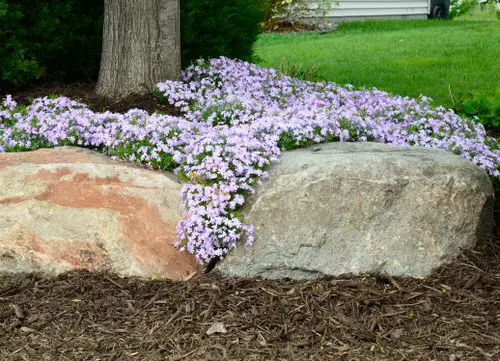
Botanical Name: Phlox subulata
These plants for cracks and crevices boast colorful five-pointed star-like blooms in lavender, pink, red, blue, or white blooms and needle-like leaves.
12. Sedum

Botanical Name: Sedum
The smallest sedum grows up to 8 cm tall, making it a great choice for cracks and crevices. It also does not require extra fertilizer or water.
13. Ice Plant
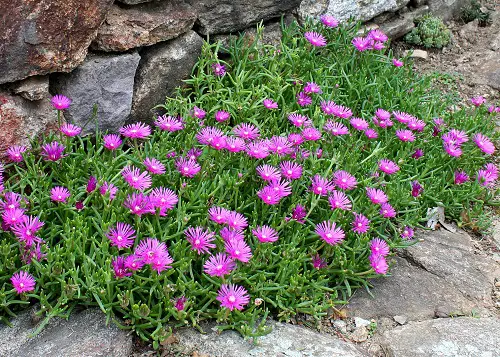
Botanical Name: Delosperma
The daisy-like blooms of this succulent perennial groundcover are cold-hardy. It prefers full sun but can withstand some light shade in the garden.
14. Rock Jasmine

Botanical Name: Androsace sarmentosa ‘Sherriffii’
‘Sherriffii’ displays deep green evergreen rosettes of trailing carpet and clusters of scented rose-pink blooms.
15. Lady’s Mantle

Botanical Name: Alchemilla mollis
This low-growing, evergreen perennial blooms in mid-spring with bright yellow blooms, and the lime green foliage look beautiful in early summer.
16. Siskiyou Lewisia
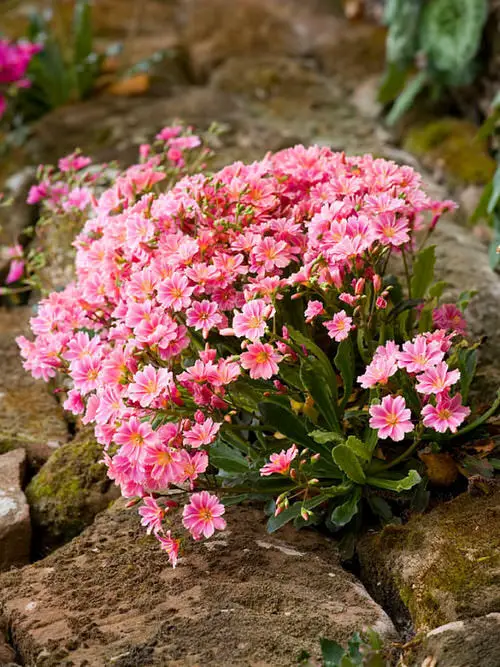
Botanical Name: Lewisia Cotyledon
These plants for cracks and crevices sports masses of blooms over the summer months in purple, pink to orange shades – which will surely make the gaps stand out!
Stunning Succulents with Pink Flowers
17. Blue Star Creeper

Botanical Name: Isotoma fluviatilis
This plant idea is an apt choice for shady areas, as it features star-shaped pale blue blooms in spring and early summer.
18. Dwarf Mondo Grass
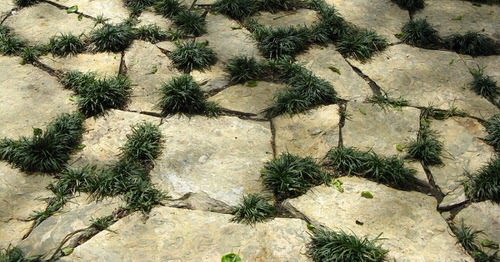
Botanical Name: Ophiopogon japonicus
It forms clumps of bright green leaves when grown in cracks or crevices. These plants for cracks and crevices spread slowly so you don’t worry to control it.
19. Corsican Mint

Botanical Name: Mentha requienii
This beautiful plant displays fragrant green foliage – perfect to fill up the unwanted gaps. Plant it in cracks so the mild aroma of mint spreads when you walk over it.
20. Chamomile
Botanical Name: Chamaemelum Nobile
Chamomile emits a mind-blowing scent when walked on, it blooms in summer and grows up to 50 cm tall. To keep them in check – trim regularly.
Growing Chamomile in Pots
21 Mind Your Own Business

Botanical Name: Soleirolia soleirolii
This plant works well in shady areas, purchase a pre-grown plant from a garden center, divide it into small, rooted sections, and push them into gaps.
22. Ajuga

Botanical Name: Ajuga Reptans
This easy-to-care sprawling perennial herb is loved for chocolate, bright green, bronze, or bicolor leaves. In spring, it shows off white, purple, or blue blooms.
23. Mazus Reptans
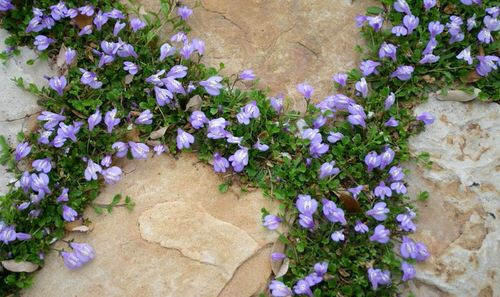
Botanical Name: Mazus reptans
Mazus reptans is a herbaceous plant that offers blue-green leaves and purple-blue blooms. It will surely look amazing in the crevices with its flowers!


